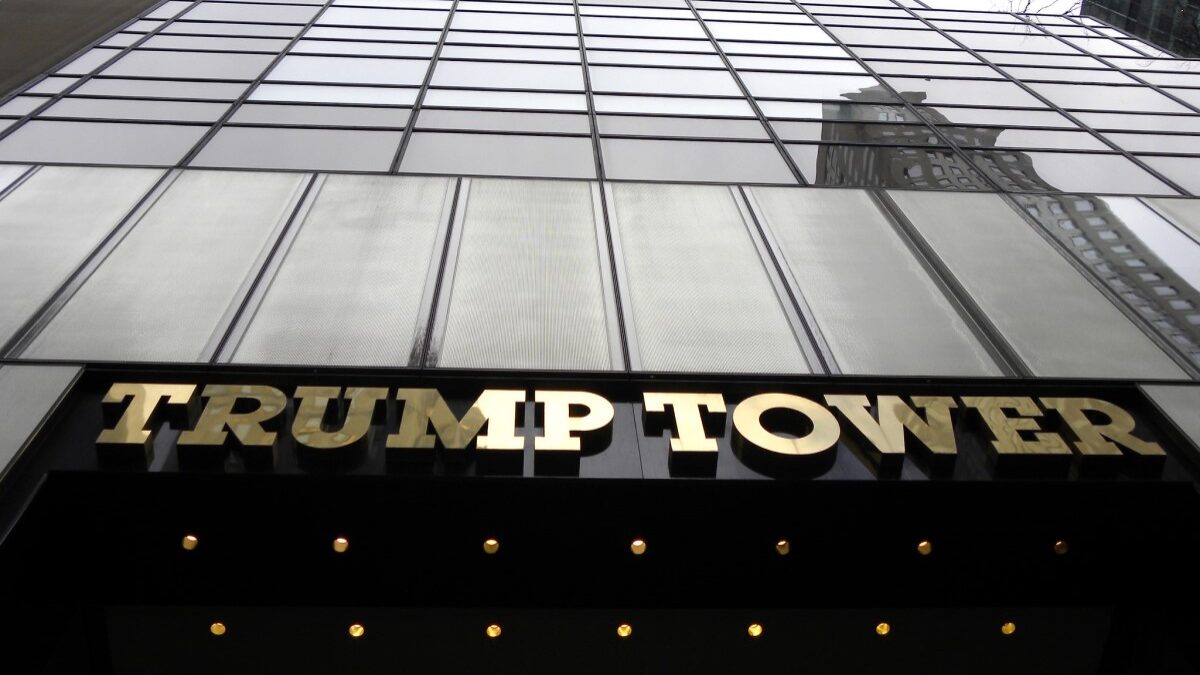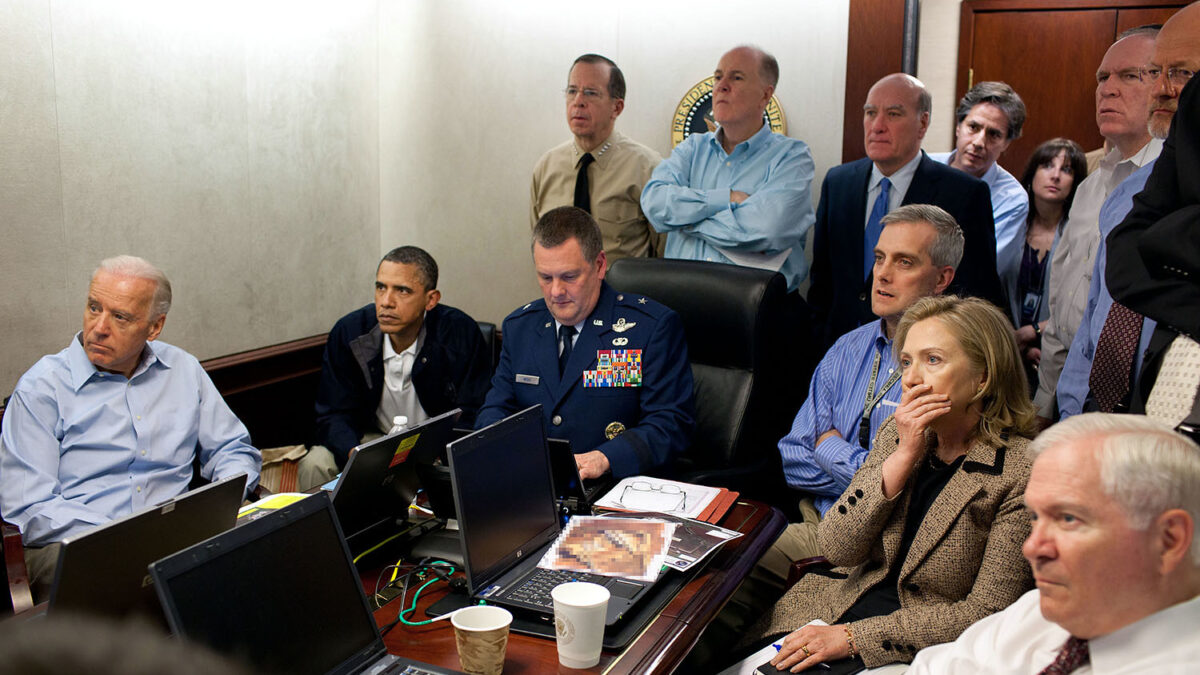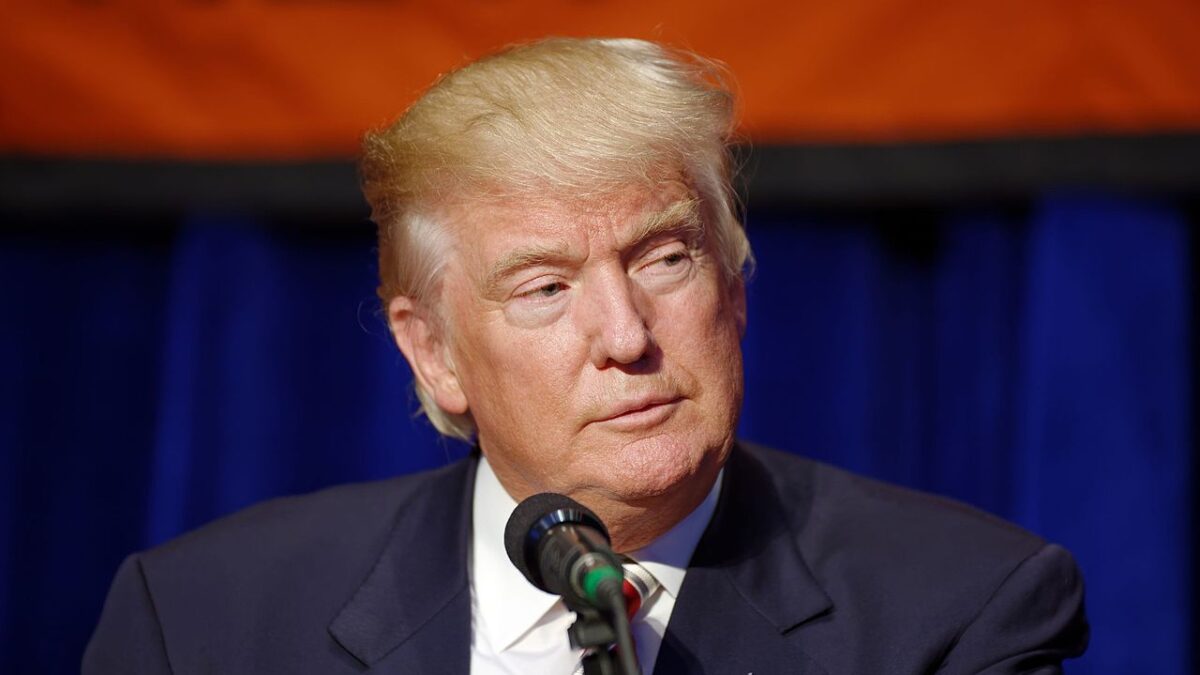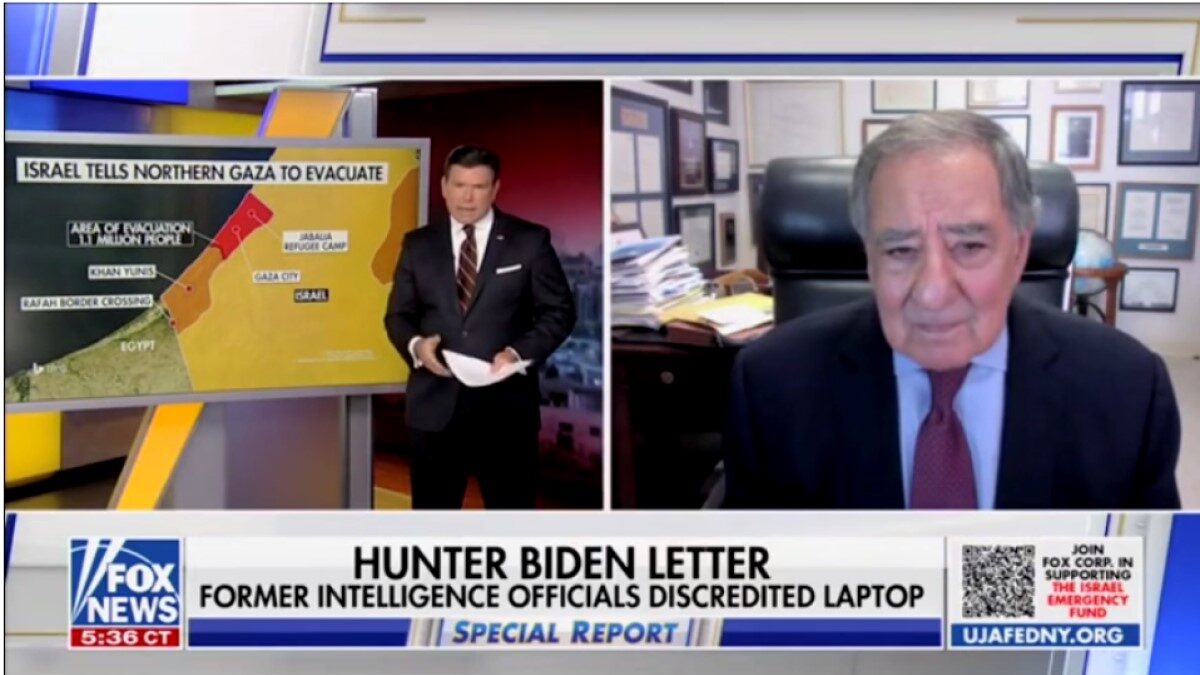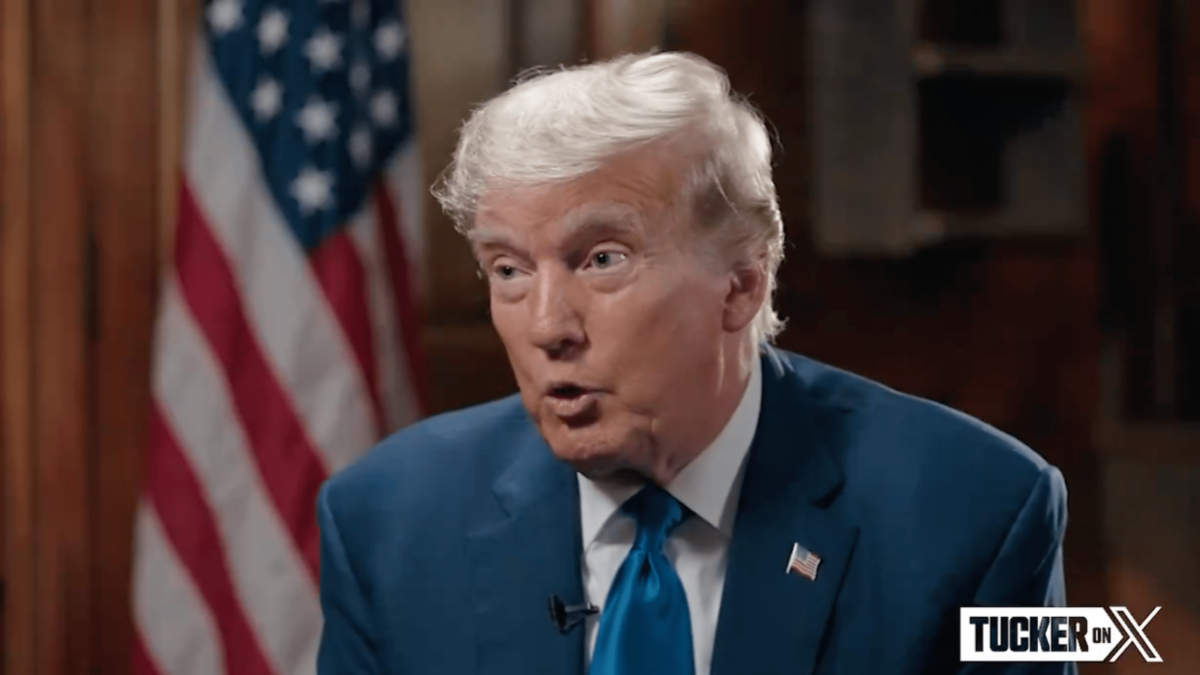A Georgia Tech researcher’s candid reaction to the indictment of a former Hillary Clinton campaign lawyer hints at an intriguing development in the Russia collusion scandal. Two days after the indictment dropped, the researcher told a university lawyer and other higher-ups that the special counsel had lied in the indictment about the Alfa Bank hoax, according to a document first obtained by The Federalist on Thursday.
But the details the Georgia Tech researcher explained instead reveal a more damning scenario concerning his peers’ potential access to data from the Executive Office of the President, or EOP, during the Trump transition period. These new revelations come six months after Special Counsel John Durham indicted Michael Sussmann on one count of lying to FBI General Counsel James Baker.
That indictment, as I previously explained, “alleged that when Sussmann met with Baker on September 19, 2016, to provide the FBI attorney with data and ‘white papers’ that purported to establish a secret communication channel between the Trump organization and the Russia-connected Alfa Bank, Sussmann falsely claimed he was not acting on behalf of a client, when in reality Sussmann was working both for the Clinton campaign and an unnamed ‘U.S. technology industry executive’ since confirmed to be Rodney Joffe.”
What We Know From the Indictment
While Durham’s team charged Sussmann with a single count of lying to the FBI, the special counsel’s speaking indictment added great texture to the origins of the Alfa Bank conspiracy theory. According to the indictment, by late July 2016, a computer researcher operating under the moniker “Tea Leaves” and branded “Originator-1” by the special counsel’s office had assembled data purporting to show communications between Alfa Bank and the email domain “mail.1.trump-email.com.”
“Originator-1,” since identified as April Lorenzen, then shared that data with Joffe and two university researchers called simply Researcher-1 and Researcher-2 in the indictment, but now known to be Georgia Tech’s Manos Antonakakis and David Dagon, respectively.
According to the indictment, Joffe also “used his access at multiple organizations to gather and mine public and non-public Internet data regarding Trump and his associates, with the goal of creating a ‘narrative’ regarding the candidate’s ties to Russia.” For instance, Joffe allegedly directed employees at two tech companies in which he had an ownership interest “to search and analyze their holdings of public and non-public internet data for derogatory information on Trump.” He also allegedly tasked Lorenzen, Antonakakis, and Dagon with searching “broadly through Internet data for any information about Trump’s potential ties to Russia.”
Antonakakis’s Internal Response to the Indictment
Soon after the indictment dropped, Antonakakis surmised he was the unnamed Researcher-1 and, after sending a flurry of emails to his attorney, he penned a document entitled “fallacies” that purported to identify inaccuracies in the indictment. Antonakakis then emailed that document to his private lawyers, a Georgia Tech lawyer, and other higher-ups at the university.
Last week, The Federalist reported on several details contained in an abbreviated version of the “fallacies” document obtained from Georgia Tech pursuant to a Right-to-Know request. On Thursday, The Federalist received a more complete version of the summary drafted by Antonakakis two days after news broke of Sussmann’s indictment. The expanded version includes Antonakakis’ synopsis of what he told the special counsel’s team about the Alfa Bank hoax.
Initially, Antonakakis took issue with the special counsel’s office’s claim that he was “tasked” to do anything.
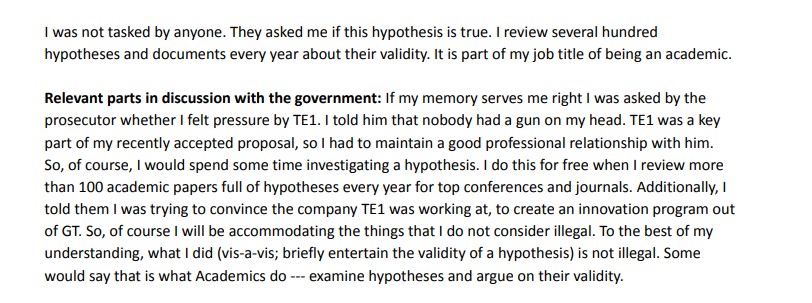
What Antonakakis Told the Special Counsel
While claiming Joffe did not task him to do anything, Antonakakis noted that when asked by the federal prosecutor if he felt pressured by Joffe, he “told him that nobody had a gun on my head,” but that Joffe “was a key part of my recently accepted proposal, so I had to maintain a good professional relationship with him.”
Antonakakis was also trying to convince Joffe’s company “to create an innovation program out of [Georgia Tech].” As a result, Antonakakis explained to Durham’s team, that he would “of course” spend some time investigating the validity of a hypothesis.
Two other aspects of Antonakakis’ summary of his conversation with the special counsel’s team, however, proved much more significant. First, as explained here, Antonakakis told the special counsel that he had concluded Joffe’s Alfa Bank analysis was “not great.”
Second, Antonakakis’ “fallacies” document elaborated on how he had used EOP data for his proposal to the Department of Defense’s Defense Advanced Research Projects Agency (DARPA) and his contention that the special counsel’s office had lied in the indictment by purportedly claiming the data used to formulate the Alfa Bank hypothesis came from Georgia Tech.
The Special Counsel Didn’t Lie, He’s On to Something
Antonakakis’ discussion on this second inter-connected point, however, proves revealing because it shows not only that the special counsel did not lie in the indictment, but that Durham’s team is focusing on the alleged exploitation of the EOP data by Joffe, Lorenzen, and Dagon, separate and apart from the Alfa Bank hoax.
Here, it is important to remember Sussmann allegedly pushed two separate theories on behalf of Joffe: 1) the Alfa Bank theory (also allegedly peddled by Sussmann for the Clinton campaign) that claimed the Trump organization had a secret communication channel with the Russian bank; and 2) the YotaPhone thesis that Sussmann presented to CIA officials on February 9, 2017, when he provided the agency “data which he claimed reflected purportedly suspicious DNS lookups by Trump Tower, Trump’s residential apartment building, the EOP, and a healthcare provider, of internet protocol or IP addresses affiliated with a Russian mobile phone provider.”
When the indictment against Sussmann went public last fall, the special counsel’s office had only explicitly referenced the Alfa Bank theory Sussmann pushed to the FBI in September 2016. While the indictment made broader generic references to “research concerning Trump’s potential ties to Russia,” in his “fallacies” document, Antonakasis apparently interpreted the indictment as solely concerning the Alfa Bank research.
Antonakakis Is Misinterpreting the Special Counsel
Referring to the special counsel’s office, Antonakasis wrote that he “told them that none of the data [he] had in the [Georgia Tech] cluster could possibly be used to create the report they care about.” To prove his point, Antonakakis noted that the “AlfaBank article contained data from June and July of 2016,” but that internal emails showed the data Georgia Tech had from Neustar spanned from August 1, 2016 until April 21, 2017. This proved, Antonakakis explained, that Georgia Tech “could not have been used to produce the Trump-AlfaBank story article because [Georgia Tech] lacked the relevant historic data.”
Antonakasis then stressed that he told the special counsel’s office “two or three times” that Georgia Tech did not pay for or use any of the data contained in the Alfa Bank research and that instead that data had been sent to him. Thus, the special counsel “lied,” Antonakasis claimed, when it charged in the indictment that Joffe’s internet company “data and other data” were exploited to conduct research that was later conveyed to the FBI.
The indictment, however, was not so narrowly worded. Rather, the indictment alleged that data from Joffe’s internet company, and other data, was exploited “to conduct research concerning Trump’s potential ties to Russia.” The Alfa Bank research was only one aspect of that research, however, as the special counsel’s office made clear in a subsequent filing discussing potential conflicts of interest by Sussmann’s criminal defense attorney.
Democrat Operatives Watching President Trump’s Internet Traffic
In a “Motion to Inquire on Potential Conflicts” filed by the government last month in the Sussmann case, the special counsel’s office revealed the existence of the YotaPhone hoax allegedly peddled by a former Clinton campaign attorney to the CIA. According to that motion, Joffe “and his associates” also exploited the “domain name system,” or DNS Internet traffic, connected to the Trump Tower, Donald Trump’s Central Park West apartment building, and the Executive Office of the President of the United States.
As Durham’s team had previously explained in the Sussmann indictment, Joffe “had come to access and maintain dedicated servers for the EOP as part of a sensitive arrangement whereby it provided DNS resolution services to the EOP.” According to the motion, Joffe and “his associates exploited this arrangement by mining the EOP’s DNS traffic and other data” to obtain derogatory information about Trump.
Sussmann then provided the CIA the alleged culmination of some of that research, claiming the data “reflected purportedly suspicious DNS lookups by Trump Tower, Trump’s residential apartment building, the EOP, and a healthcare provider, of internet protocol or IP addresses affiliated with a Russian mobile phone provided.” Those lookups, Sussmann would tell the CIA, “demonstrated that Trump and/or his associates were using supposedly rare, Russian-made wireless phones in the vicinity of the White House and other locations.”
What Antonakakis Missed
While the indictment and the “Motion to Inquire on Potential Conflict of Interest” both spoke of an exploitation of Joffe’s access to the EOP data, it was the latter motion that made clear that data was then used to push the YotaPhone conspiracy theory to the CIA. Here, Antonakakis’ comments in the “fallacies” document prove insightful.
“What I told the prosecutor,” Antonakasis wrote about the EOP data “was that I gained limited access to these data in 2016,” which he used to effectively find an infection in the EOP. Antonakasis then included details on the EOP infection in his proposal to DARPA. But Georgia Tech lost access to the EOP data in January/February 2017, Antonakasis added. Given these facts, Antonakasis believed the Sussmann indictment’s claim that the EOP data was exploited was misleading.
What Antonakasis did not know then, however—and maybe still does not realize—is that the special counsel’s office apparently believes Joffe, Lorenzen, and Dagon had exploited Joffe’s access to the EOP data to craft the YotaPhone conspiracy theory. Re-visiting the Sussmann indictment seemingly confirms that reality.
In late 2016 or early 2017, the indictment read, Joffe, Lorenzen, and Dagon, “continued to compile additional information and data regarding the [Alfa Bank] allegations, and gathered other purported data allegedly involving Trump-related computer networks and Russia” (emphasis added). “Sussmann would later convey these allegations to another U.S. government agency,” the indictment continued.
In its “Motion to Inquire on Potential Conflicts,” the special counsel’s office revealed that the “other purported data” involved the YotaPhone and its supposed connection to the EOP, as well as the Trump Tower and Trump residential building. Sussmann then allegedly passed on this “intel” to the CIA.
Antonakakis’s Data Didn’t Extend to the YotaPhones
But if Antonakasis’ denials are to be believed—and I think they should be because they are completely consistent with the special counsel’s allegations and Antonakakis’s private correspondence—Antonakasis only reviewed data in July and August 2016, and thus had nothing to do with the EOP data connected to the YotaPhones.
Here, then the special counsel’s allegations concerning Georgia Tech’s access to the EOP data as part of the proof-of-concept stage of its DARPA contract prove significant. That appears precisely why Antonakasis accessed the EOP data, but as the indictment made clear, Lorenzen was not part of that contract proposal, yet the special counsel alleged Lorenzen and Dagon both exploited the EOP data. So the real question is: how?
How did Lorenzen and Dagon obtain access to the EOP data to mine it to craft the YotaPhone conspiracy theory? Did Joffe provide them access to the data separate and apart from Georgia Tech? Or did Dagon access the EOP data at the Georgia Tech lab?
The Federalist asked Georgia Tech’s general counsel and other top lawyers at the university if Dagon had used Georgia Tech data or resources to mine the EOP data, but did not receive a response. It may well be that Joffe had instead provided Lorenzen and Dagon access to the EOP data, which then raises other questions concerning the legality of that move.
Two things are certain, however, from Antonakasis’s commentary. First, access to EOP data is extremely limited, with him only obtaining a few months of access before it was pulled from his work. Second, Antonakasis seems oblivious to the extent of the scandal in which his peers are apparently embroiled, and because of his ignorance he sees the special counsel as the bad guy.
But it was not Durham who was lying in the indictment.
